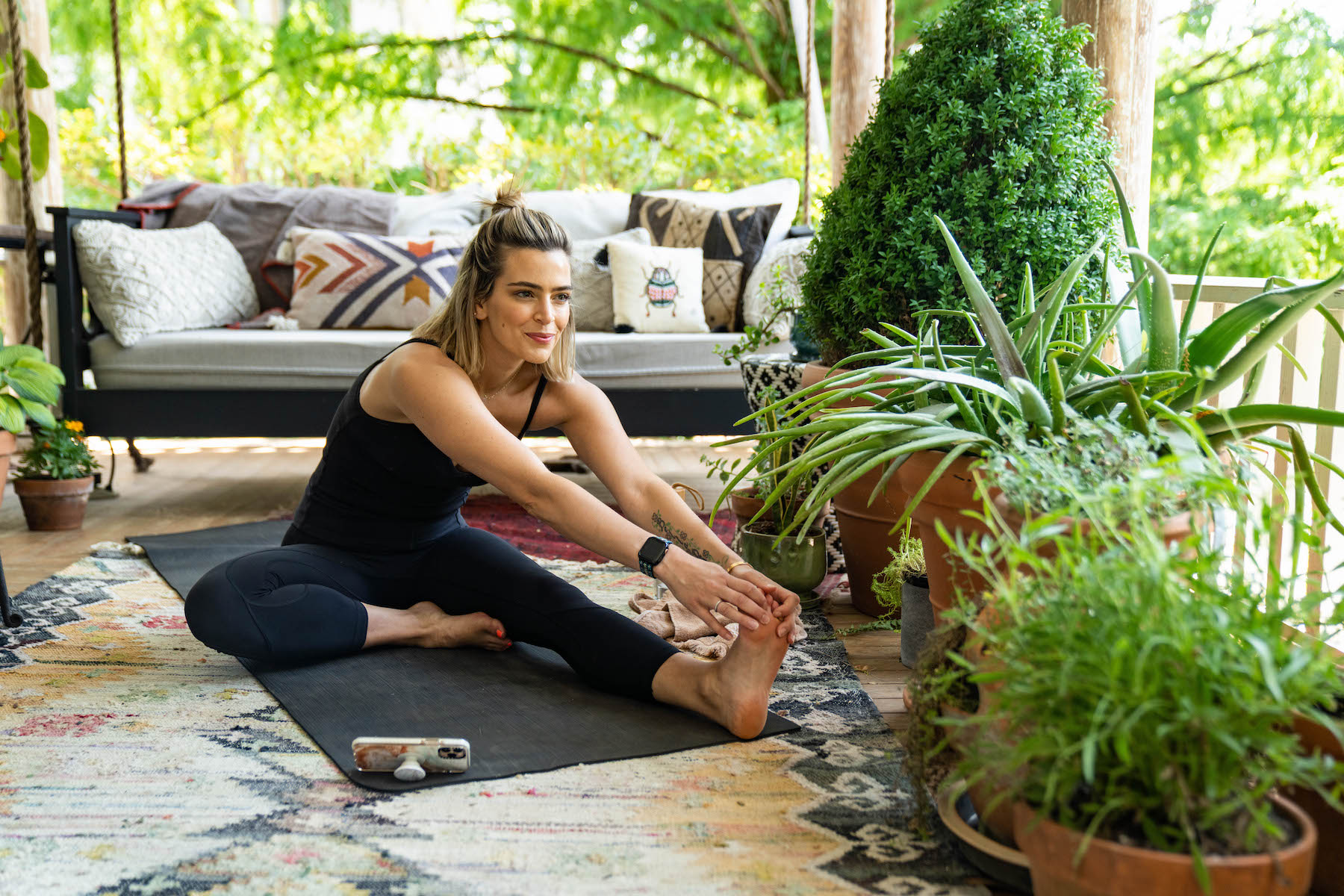
9 Stretches to Relieve Your Lower Back
Loosen up those tight lower-back muscles with these stretches.
By Kristine Thomason•
What Causes Lower Back Pain and Tightness?
Which Muscles Impact the Lower Back?
9 Best Stretches for Your Lower Back
Adding Lower Back Stretches To Your Routine
There are few things more uncomfortable than experiencing a nagging tightness or pain in your lower back, and naturally, you may wonder exactly how to stretch your lower back to find some relief. The frustrating sensation can really mess with your entire day—whether it’s caused by a wonky sleeping position, a misstep in your workout, or a completely mysterious catalyst. In any case, nearly 619 million people globally dealt with back pain in 2020, according to the World Health Organization, so you’re certainly not alone in these woes.
To help you suss out the potential cause of your back tightness and find the best lower back stretches to offer some relief, Peloton Instructor Ally Love shares her tips and advice. Before diving in below—if you are experiencing pain (especially chronic back pain) you should seek medical attention and talk to your doctor before trying any stretches or exercises.
What Causes Lower Back Pain and Tightness?
While it can be caused by a number of factors, Love says there are some common lower back tightness and pain culprits including:
Muscle strain: “The most common cause is muscle strain,” says Ally, “meaning overuse or strain of the muscles and ligaments in the lower back. This can occur due to lifting heavy objects or sudden movements.”
Poor posture: “We all slouch, including myself—whether it’s home, work, or in-transit. Slouching or sitting in a way that doesn't support the natural curve of the spine can lead to chronic lower back pain and tightness.”
Inactivity: “These imbalances, and strain, may also develop due to lack of exercise or poor conditioning, and possibly a lack of awareness.”
Which Muscles Impact the Lower Back?
“There are many muscles that play a crucial role in supporting and stabilizing the spine,” says Ally, “and problems with these muscles can lead to discomfort and pain in the lower back.” In some cases, when muscles are too tight, it can put strain on the lower back (hint: those are the muscles you want to stretch for a bit of relief). For others, weakness can actually be the root cause of discomfort. Here’s a rundown from Ally of those important muscles, and their impact:
Weakness can lead to lower back pain:
Erector Spinae: These muscles run along the length of your spine and help maintain an upright posture. Weakness or tightness can lead to lower back pain.
Multifidus: These deep muscles are responsible for stabilizing the vertebrae in the spine. Weakness can result in instability and back pain.
Transverse Abdominis: This muscle is part of the core and wraps around the abdomen like a corset. Weakness can lead to poor spinal support and contribute to lower back pain.
Obliques: Located on the sides of the abdomen. Weakness or imbalances in these muscles can affect core stability and potentially lead to back pain.
Gluteal Muscles: The gluteus maximus, medius, and minimus are important for hip stability and posture. Weakness or imbalances in these muscles can affect how the lower back functions and can lead to pain.
Tightness can lead to lower back pain:
Rectus Abdominis: The rectus abdominis, commonly known as the "six-pack" muscles, can affect lower back health if they are overly tight or imbalanced with the lower back muscles.
Hip Flexors: Tight hip flexor muscles, such as the iliopsoas, can pull on the lumbar spine and contribute to lower back discomfort.
Hamstrings: Tightness can affect the posture and alignment of the pelvis and lower back, potentially leading to discomfort.
Quadratus Lumborum: This muscle connects the lower ribs to the pelvis and can be a source of pain if it becomes tight or imbalanced.
Latissimus Dorsi: These muscles, located in the upper back, can indirectly affect the lower back if they are overly tight and create postural imbalances.
9 Best Stretches for Your Lower Back
There are still a lot of unknowns when it comes to lower back pain, and the causes can certainly vary. However, Ally says, she’s found the secret to prevention is awareness and incorporating daily gentle stretching into your routine. Here are a few of the go-to stretches (along with the muscle groups they target) that she suggests trying at home, to help alleviate pain and discomfort.
For any of these stretches, she recommends: moving slowly and gently (avoid jerking or bouncing motions); breath deeply and relax while holding the stretch; if you feel pain, stop immediately, and modify the movements based on your own flexibility and comfort levels.

1. Kneeling Hip-Flexor Stretch
1. Kneel on one knee with the other foot in front and gently push your hips forward while keeping your upper body upright.
What it stretches: Tight hip flexors can also affect lower back posture. A kneeling hip flexor stretch can help.

2. Hamstring Stretch
1. Sit on the floor with your legs extended and reach for your toes, or stand with one foot on a low surface and lean forward, keeping your back straight.
What it stretches: Tight hamstrings can contribute to lower back pain by pulling on the pelvis and affecting the posture. To stretch the hamstrings, you can do a seated or standing hamstring stretch.
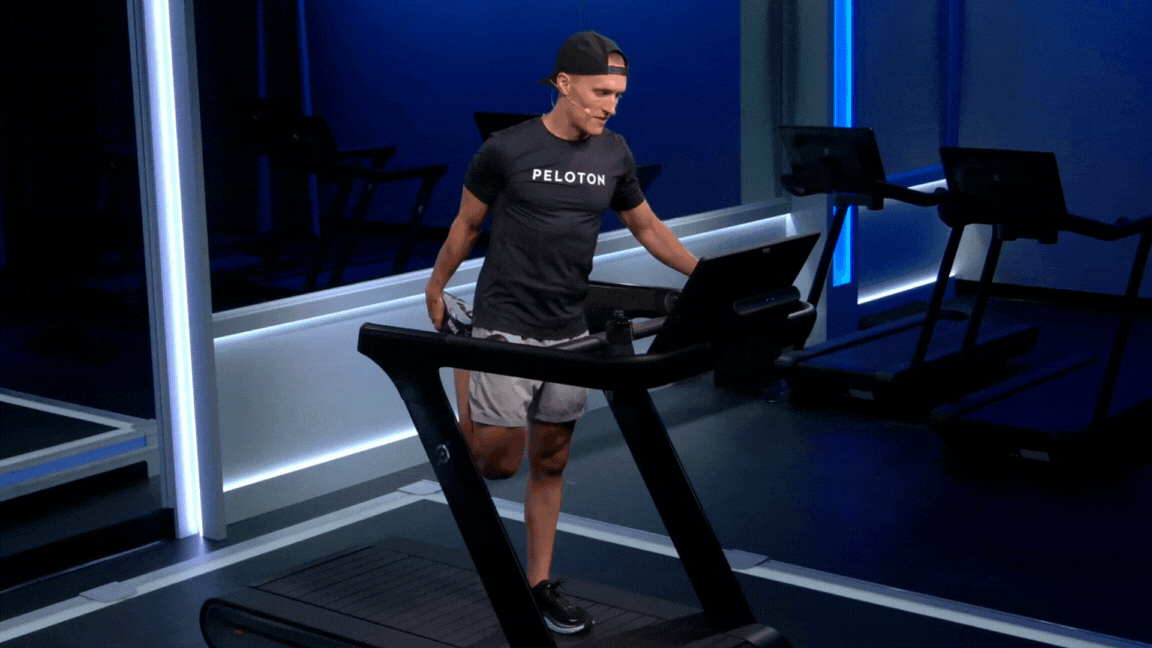
3. Quadriceps Stretch
1. Stand on one leg and bring your other foot towards your buttocks, holding your ankle with your hand and gently pulling your heel towards your buttocks.
What it stretches: Stretching the quadriceps can help alleviate lower back pain.
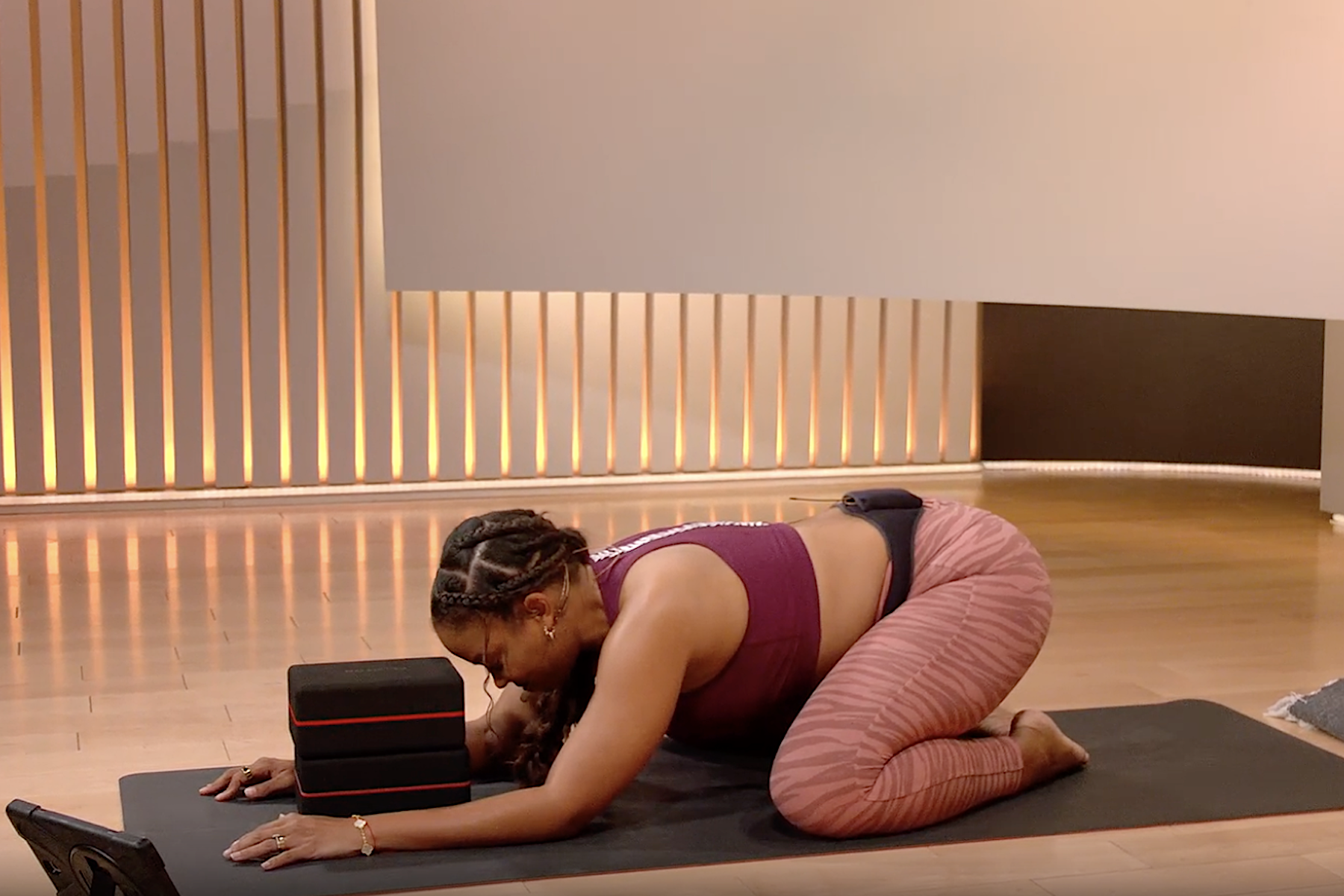
4. Child's Pose
1. Start on your hands and knees.
2. Sit back on your heels, reaching your arms forward and lowering your chest towards the floor. Keep your arms extended and your forehead resting on the ground.
3. Hold for 20-30 seconds, focusing on deep breaths to relax the lower back.
What it stretches: A simple Child’s Pose stretch can help release tension in your lower back.

5. Cat-Cow Stretch
Begin on your hands and knees.
Inhale, arch your back, and lift your head (Cow Pose).
Exhale, round your spine, and tuck your chin (Cat Pose).
Repeat this flow for 30 seconds, emphasizing the movement of your lower back.
What it stretches: Strengthening and stretching the abdominal muscles can help support the lower back. Try gentle abdominal stretches like the Cat-Cow stretch from yoga.
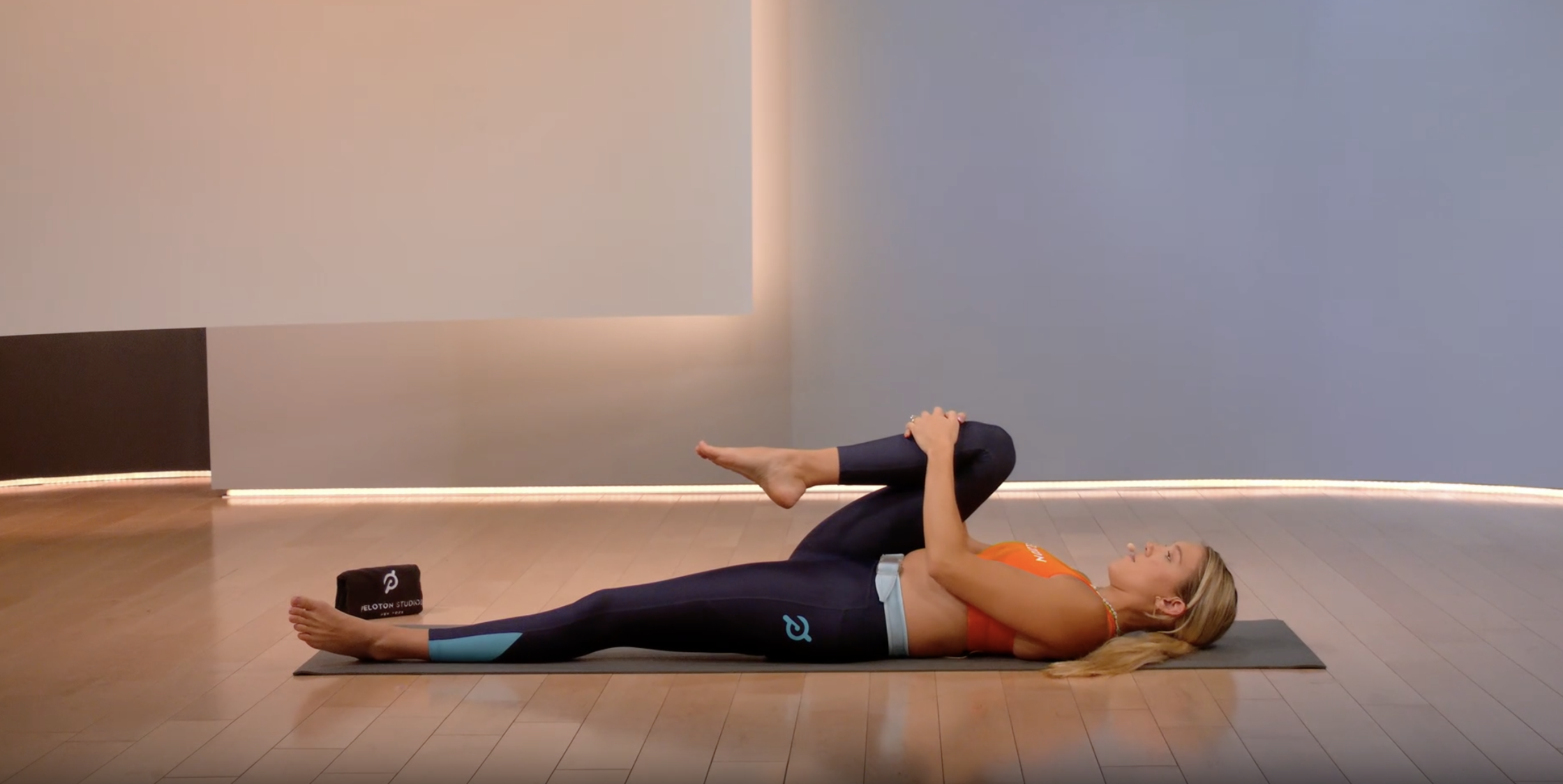
6. Knee-to-Chest Stretch
1. Lie on your back with your knees bent and feet flat on the floor.
2. Slowly bring one knee toward your chest, holding it with your hands.
3. Hold for 20-30 seconds, then switch legs. Keep the opposite leg extended on the floor.
What it stretches: Stretching the lower back itself can also be helpful.
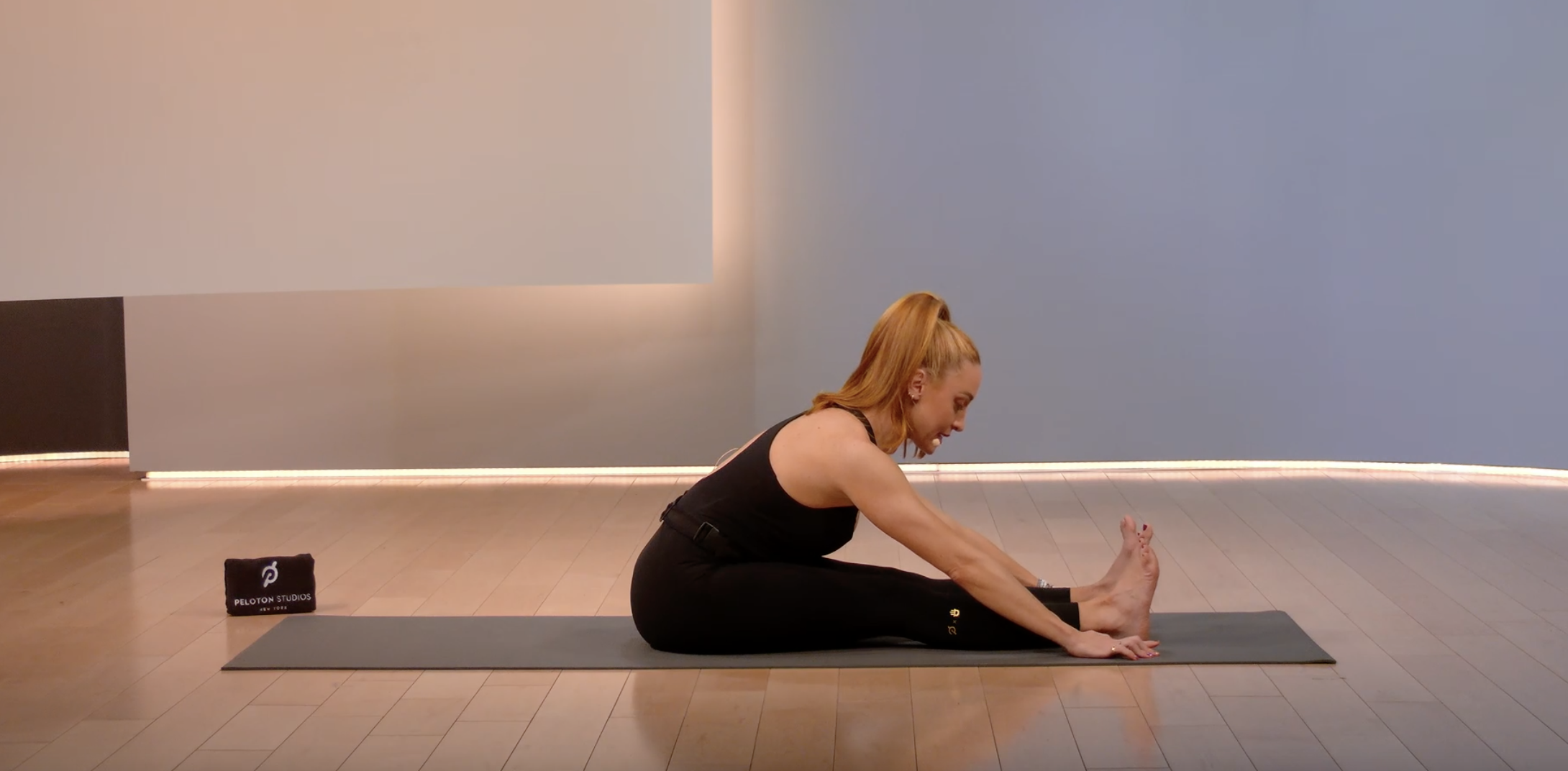
7. Seated Forward Bend
1. While seated on a mat on the floor, hinge at your hips and reach forward, trying to touch your toes or shins.
2. Keep your back straight and chest open. Hold for 20-30 seconds while breathing deeply.
What it stretches: A seated forward bend simultaneously helps release your lower back and stretch your hamstrings for additional relief.
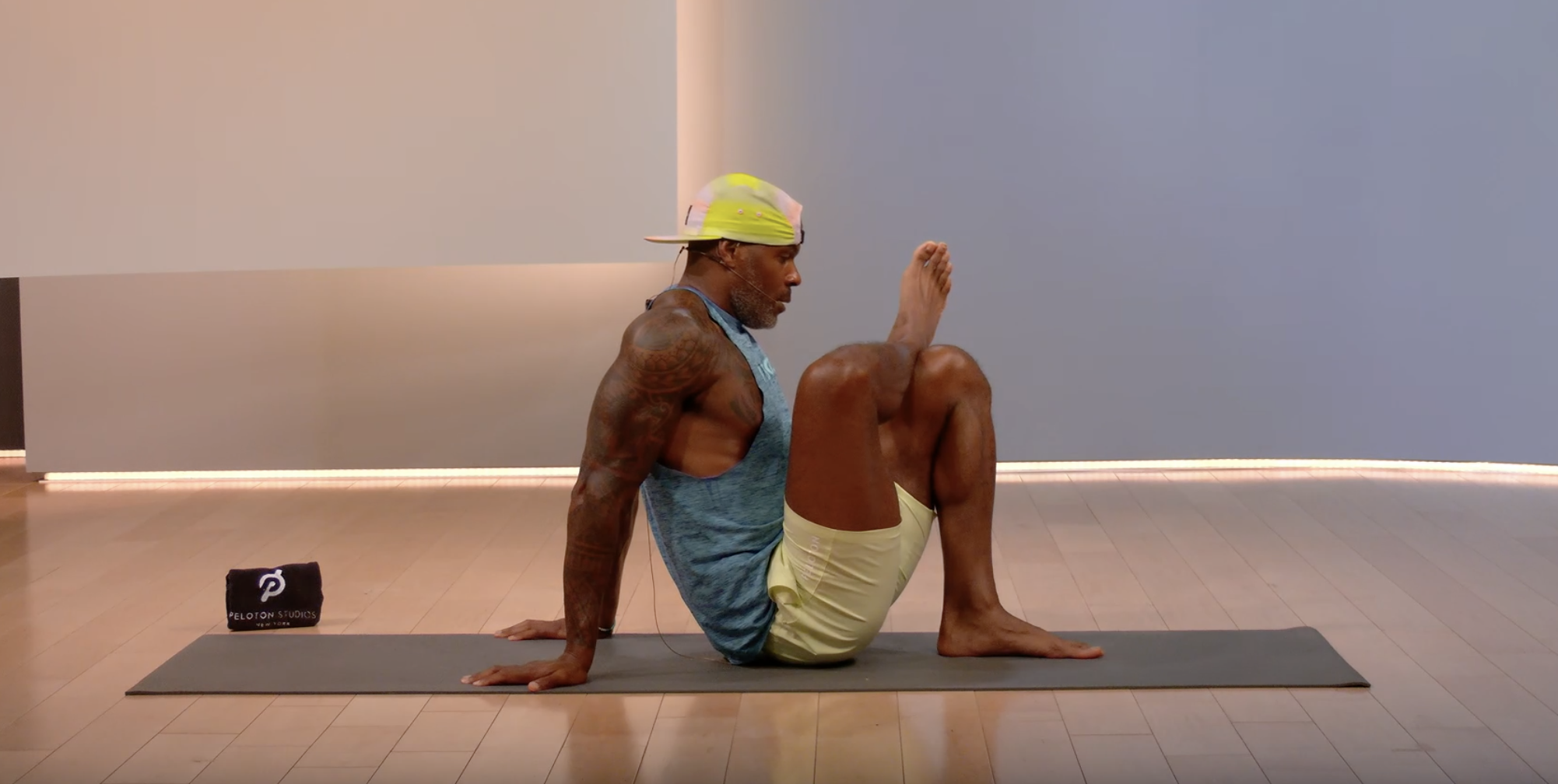
8. Piriformis Stretch
1. Sit with one leg bent and the other ankle crossed over your bent knee.
2. Gently push down on the raised knee, feeling a stretch in your buttocks. Hold for 20-30 seconds on each side.
What it stretches: The piriformis muscle is deep in the buttocks and can contribute to lower back pain if it's tight.

9. Lumbar Rotation Stretch
Lie on your back with knees bent and feet flat on the floor.
Slowly lower both knees to one side, keeping your shoulders on the ground.
Hold for 20-30 seconds, then switch sides.
What it stretches: This stretch helps release tension in the lower back and hips.
Adding Lower Back Stretches To Your Routine
Consistency is key when it comes to these stretches, says Love. She recommends performing some of the options above daily, to help maintain flexibility and mobility. (Pro tip: “Warm up before stretching with some light aerobic activity or a warm shower,” she says. “I mean who doesn’t love a warm shower!”)
What’s more, if you’d like to support your lower back on a regular basis, consider checking out one of the many helpful classes on the Peloton App. There’s an entire stretching category, including a 10-minute full-body stretch, plus plenty of pre- and post-workout stretch routines. Beyond the stretch-specific classes, Ally suggests checking out some of the lower body workouts, as well—which not only include crucial strengthening exercises, but also useful accompanying stretches.
Other types of exercise on the App can be incredibly helpful, too: “Many of my barre classes, especially those that are 30 mins or longer will provide greater awareness on pelvis placement, lower back positioning, and stretches,” Ally says. “I would advise you to take two barre classes a week to create awareness, muscle focus, and increase your movement vocabulary especially around lower back and pelvis placement.”
Whatever class you decide to try, “remember things can be scary when unfamiliar,” says Ally. But with any new type of exercise, give it a try a few times to see if it’s a fit. After all, consistency is key when it comes to supporting and stretching your lower back—so finding a method that you enjoy will make it easier to keep up with your routine.
This content is for informational and educational purposes only and does not constitute individualized advice. It is not intended to replace professional medical evaluation, diagnosis, or treatment. Seek the advice of your physician for questions you may have regarding your health or a medical condition. If you are having a medical emergency, call your physician or 911 immediately.
Level up your inbox.
Subscribe for a weekly dose of fitness, plus the latest promos, launches, and events.